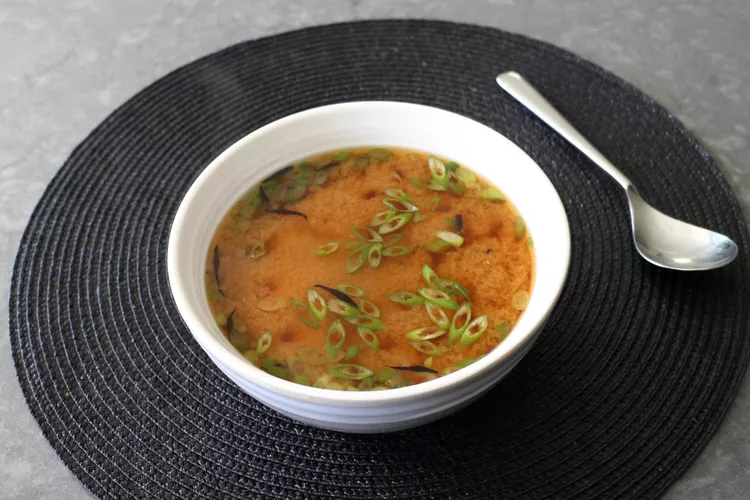Miso paste, a traditional Japanese ingredient made from fermented soybeans, is renowned for its unique umami flavor and versatility in various dishes. However, there may be instances when you need this essential ingredient in your pantry. Whether you are following a specific dietary restriction, have run out of miso paste, or want to experiment with different flavors, fear not! Several viable substitutes for miso paste can help you achieve similar taste profiles and enhance your culinary creations.
In this article, we will delve into the world of miso paste substitutes, exploring alternative ingredients that can be used as a worthy replacement. We will discuss their flavor profiles, culinary applications, and how they can be incorporated into different recipes to provide a similar umami experience.
What Is Miso Paste?
Miso paste is a traditional Japanese condiment made from fermented soybeans, rice or barley, salt, and a fungus called koji. It has a thick and smooth texture with a rich umami flavor. Miso paste is commonly used in Japanese cuisine to add depth and complexity to various dishes such as soups, marinades, dressings, and glazes. It is also known for its health benefits, as it contains probiotics, vitamins, minerals, and antioxidants. Miso paste comes in different varieties ranging from light to dark, each offering distinct flavors and uses in cooking.
Where To Find Miso Paste?
Miso paste can be found in various places, including grocery stores, specialty food stores, online retailers, and even some local farmers’ markets. Grocery stores such as Walmart, Target, and Whole Foods often carry Miso paste in their international or ethnic food sections. Speciality food stores like Trader Joe’s or gourmet shops may also stock Miso paste.
Additionally, online retailers like Amazon or specialty food websites offer a wide selection of Miso paste brands and flavors for convenient home delivery. Some local farmers’ markets or food festivals may feature vendors selling homemade or artisanal Miso paste.
How To Make Miso Paste?
Here is how you can make miso paste:
- Gather the necessary ingredients: dried red chili peppers, garlic cloves, olive oil, salt, and lemon juice.
- Remove the stems from the dried red chili peppers and discard them.
- Place the dried red chili peppers in a bowl and cover them with hot water. Let them soak for about 15 minutes or until they become soft.
- Drain the water from the chili peppers and transfer them to a blender or food processor.
- Add the garlic cloves, olive oil, salt, and lemon juice to the blender or food processor.
- Blend or process the ingredients until you achieve a smooth paste-like consistency. You may need to scrape down the sides of the blender or food processor occasionally to ensure everything is well-mixed.
- Taste the miso paste and adjust the seasoning if required by adding more salt or lemon juice, according to your preference.
- Transfer the miso paste to a clean jar or container with an airtight lid.
- Store it in the refrigerator for up to two weeks.
10 Best Substitute Of Miso Paste

Here are 10 of the best substitutes for miso paste:
Soy Sauce
Soy sauce is a popular condiment made from fermented soybeans and wheat. It has a salty and savory flavor profile similar to miso paste. While it lacks the same depth of flavor, it can be used as a substitute in marinades, stir-fries, and sauces.
Tamari
Tamari is a gluten-free alternative to soy sauce made from fermented soybeans. It has a rich and slightly sweeter taste compared to regular soy sauce. Tamari can be used as a substitute in recipes that require a gluten-free option.
Fish Sauce
Fish sauce is a staple in Southeast Asian cuisine and is made from fermented fish. It has a strong umami flavor that can mimic the taste of miso paste. However, it is essential to note that fish sauce has a distinct fishy aroma and may not be suitable for vegetarian or vegan diets.
Anchovy Paste
Anchovy paste is another option for adding umami flavor to your dishes. Made from ground anchovies, it can provide a similar depth of flavor as miso paste. However, like fish sauce, it may not be suitable for vegetarian or vegan diets.
Vegemite
Vegemite is an Australian spread made from yeast extract. It has a strong savory taste and can be used as a substitute in small amounts. However, it has a distinct flavor that may only be suitable for some recipes.
Mushroom Powder
Mushroom powder, made from dried and ground mushrooms, can add a rich, umami flavor to dishes. It can be used as a substitute in soups, stews, and sauces. However, it lacks the fermented taste of miso paste.
Nutritional Yeast
Nutritional yeast is a deactivated yeast often used as a cheese substitute in vegan cooking. It has a cheesy and savory flavor that can provide depth to dishes similar to miso paste. However, it lacks the fermented taste and may only be suitable for some recipes.
Tahini
Miso paste substitute tahini is a paste made from ground sesame seeds and is commonly used in Middle Eastern cuisine. While it doesn’t have the same umami flavor as miso paste, it can add richness and depth to dishes. It can be used as a substitute in dressings, dips, and sauces.
White Miso Paste
If you are looking for a milder alternative to traditional miso paste, white miso paste is a good option. It has a sweeter and less intense flavor than darker miso paste varieties. White miso paste can be used in recipes that call for miso paste but require a milder taste.
Vegetable Stock or Broth
If you are looking for a simple substitute, vegetable stock or broth can be used to add flavor to your dishes. While it won’t provide the same depth of flavor as miso paste, it can still enhance the taste of soups, stews, and sauces.
3 Best Substitutes For White Miso Paste
When it comes to finding substitutes for white miso paste, there are a few options that can provide similar flavors and textures. If you don’t have white miso paste on hand or prefer an alternative, here are three substitutes to consider:
Yellow Miso Paste
Yellow miso paste is another type of Miso that can be used as a substitute for white miso paste. It is made from fermented soybeans and has a milder and sweeter flavor than white Miso. Yellow miso paste also has a lighter color, which makes it visually closer to white Miso. However, it may have a slightly different taste profile, so you may need to adjust the amount used in your recipe accordingly.
Chickpea Miso Paste
For those looking for a soy-free alternative, chickpea miso paste can be a suitable substitute for white miso paste. Made from fermented chickpeas instead of soybeans, this Miso offers a similar umami flavor profile. Chickpea miso paste is also lighter in color and has a smoother texture compared to other types of Miso. Remember that the flavor may not be identical to white Miso, so it’s best to start with a smaller amount and adjust according to your taste preferences.
Vegetable Broth or Stock
If you don’t have any miso paste available or prefer not to use it, vegetable broth or stock can be used as an alternative in specific recipes. While it won’t provide the same flavor as miso paste, vegetable broth or stock can add depth and richness to dishes like soups or stews. To enhance the umami flavor, add a small amount of soy sauce or tamari to the broth.
3 Best Substitutes For Red Miso Paste
Here are three red miso substitutes to consider:
White Miso Paste
White miso paste is made from fermented soybeans and rice or barley. It has a milder and sweeter flavor compared to red miso paste. While it may not have the same depth of flavor, white Miso can still add a savory and slightly tangy taste to dishes. It works well in soups, dressings, marinades, and glazes. When using white Miso as a substitute for red miso paste, using a bit less than the amount called for in the recipe is recommended, as it has a more pungent taste.
Soy Sauce
Soy sauce is a widely available condiment that can be used as an alternative to red miso paste in specific recipes. It is made from fermented soybeans and wheat or barley. Soy sauce has a salty and savory flavor that can add depth to dishes. However, it lacks the same complexity and richness found in miso paste. When using soy sauce as a substitute, start with a small amount and adjust according to taste. Remember that soy sauce is more liquid than miso paste, so you may need to change the dish’s consistency accordingly.
Hoisin Sauce
Hoisin sauce is a thick and dark condiment commonly used in Chinese cuisine. It is made from soybeans, garlic, vinegar, sugar, and various spices. While hoisin sauce does not have the same fermented flavor as miso paste, it can provide a similar sweet and savory taste to dishes. It works well as a glaze for meats, a dipping sauce, or as an ingredient in stir-fries. When using hoisin sauce as a substitute for red miso paste, it is essential to note that it has a more robust flavor, so that a smaller amount may be needed.
Conclusion
In conclusion, while miso paste is a unique and flavorful ingredient commonly used in Japanese cuisine, several suitable substitutes are available for those who cannot find or consume it. Soy sauce, tahini, and vegetable broth are three excellent alternatives that can provide similar umami flavors and enhance the taste of various dishes. Additionally, experimenting with different combinations of ingredients, such as soy sauce and tahini or miso soup base, can help achieve a flavor profile close to miso paste. Ultimately, the choice of substitute will depend on personal preference and the specific recipe being prepared.
Frequently Asked Questions (FAQ’s)
What Does Miso Paste Taste Like?
Miso paste has a rich, savory, and umami flavor with a complex taste profile that can vary depending on the type of Miso and its fermentation process. It is often described as salty, earthy, slightly sweet, and sometimes nutty or fruity. The taste of miso paste can also be influenced by factors such as the region it is produced and the ingredients used.
How Much Soy Sauce To Substitute For Miso Paste?
To substitute miso paste with soy sauce, use one tablespoon for every teaspoon of miso paste.
How Do You Use Miso Paste?
Miso paste is commonly used in Japanese cuisine as a flavor enhancer and base for soups, marinades, dressings, and sauces. It can also be used as a spread or mixed into dishes for added umami flavor.
Can I Make Traditional Miso Paste At Home?
Yes, you can make traditional miso paste at home by fermenting soybeans, koji, and salt together for several months. The process involves:
- Soaking and cooking the soybeans.
- Mix them with koji and salt.
- Allowing the mixture to ferment in a controlled environment.
Can Soy Bean Paste Replace Miso?
Yes, soybean paste can be used as a substitute for Miso in certain dishes, although there may be slight differences in taste and texture.
What Are The 2 Main Ingredients In Miso?
The two main ingredients in Miso are soybeans and koji, a fungus used to initiate the fermentation process.
Can I Use Tomato Paste Instead Of Miso Paste?
Yes, tomato paste can be used as a substitute in specific recipes, but it will alter the flavor profile significantly.
Does Miso Paste Need To Be Refrigerated?
Miso paste does not necessarily need to be refrigerated, but it is recommended to store it in the refrigerator to maintain its quality and extend its shelf life.
When Should I Throw Out Miso Paste?
It is essential to check for signs of spoilage, such as mold growth, off smells, or changes in texture, before using it. If any of these signs are present, it is recommended to discard the miso paste.






